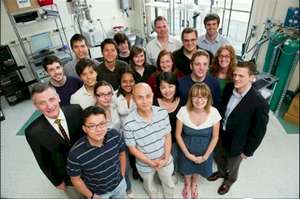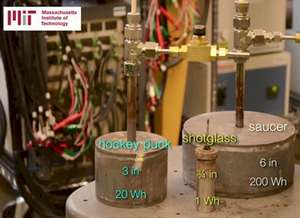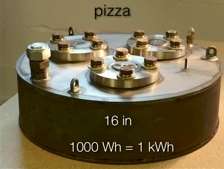Donald Sadowy's Liquid Batteries
LMBC is commercializing liquid metal battery technology
invented at MIT for grid-scale energy storage
Compiled by
Sterling D. Allan
Pure Energy Systems News
April 17, 2012

MIT Professor, Donald Sadowy, has been pursuing a dream of creating a
cost-effective liquid battery for grid-level storage. Rather than tap
the expertise of professionals in the field, his approach has been to
train new students with the task. And they have formed a new company,
Liquid Metal Battery Corporation (LMBC) to expedite bringing their
successful formula to market. The idea is to be able to make the
batteries larger to bring their cost down, rather than making many small
batteries and combining them.
Their battery uses magnesium (Mg) in the top layer and Antimony (Sb) in the bottom layer, divided by a liquid salt layer. To produce current, Mg looses two electrons, to become a Mg2+ ion, which travels through the electrolyte salt layer into the Sb layer, accepting two electrons to form an SbMg alloy.
That process is reversed when current is added to the mix, such as from a wind or solar farm or other energy source that needs to be stored.
Battery attributes include: silent, emissions-free, no moving parts, remotely controlled, designed to the market price point, without subsidy. Running at elevated temperatures, the battery can handle the temperature rises that come from current surges.
Major funding has come from the private sector (including Bill Gates and Total) and the U.S. Federal Government.
www.pureenergysystems.com
PES Network, Inc.
Copyright © 2003 - 2012



